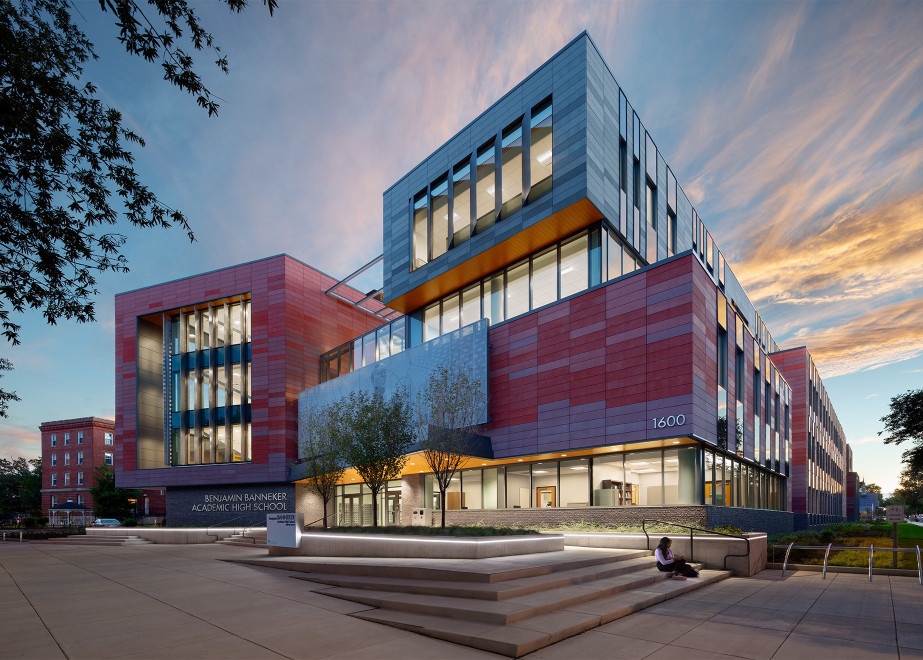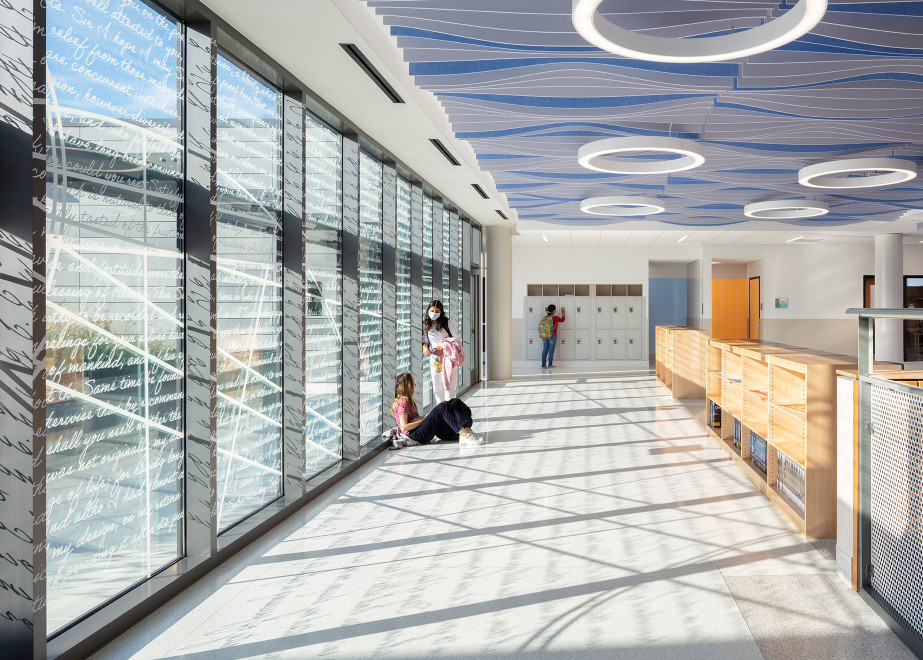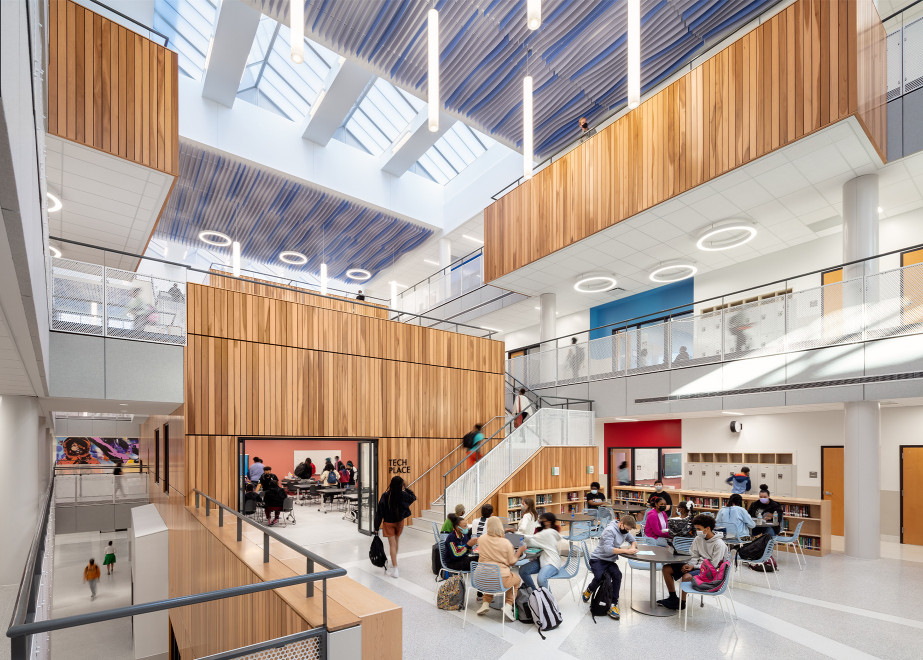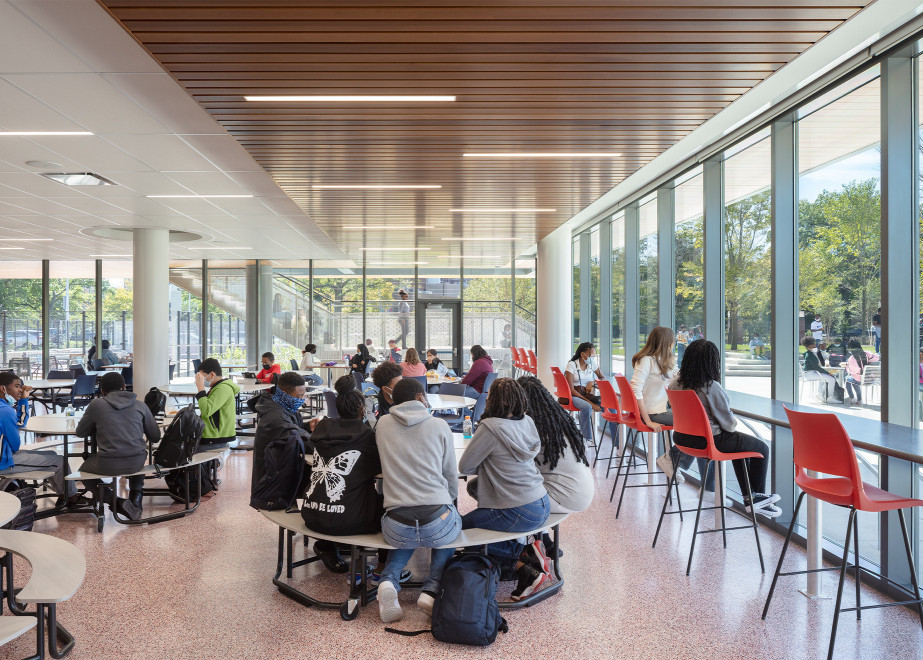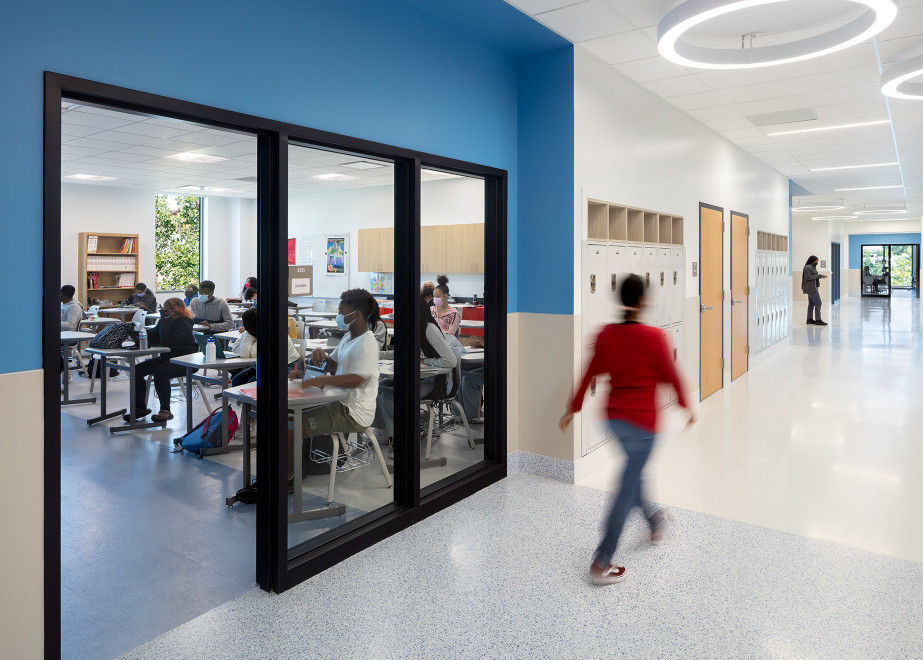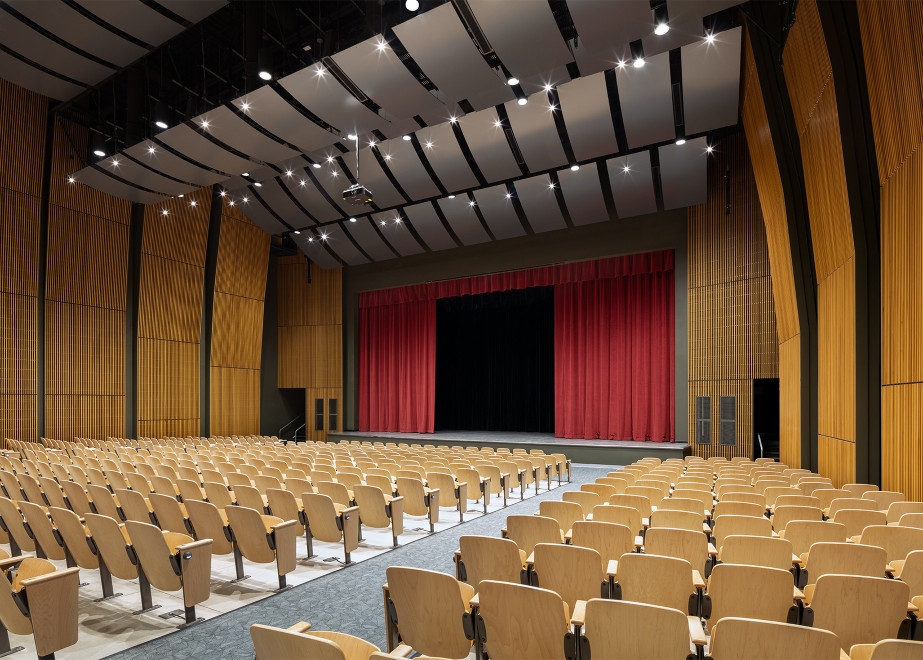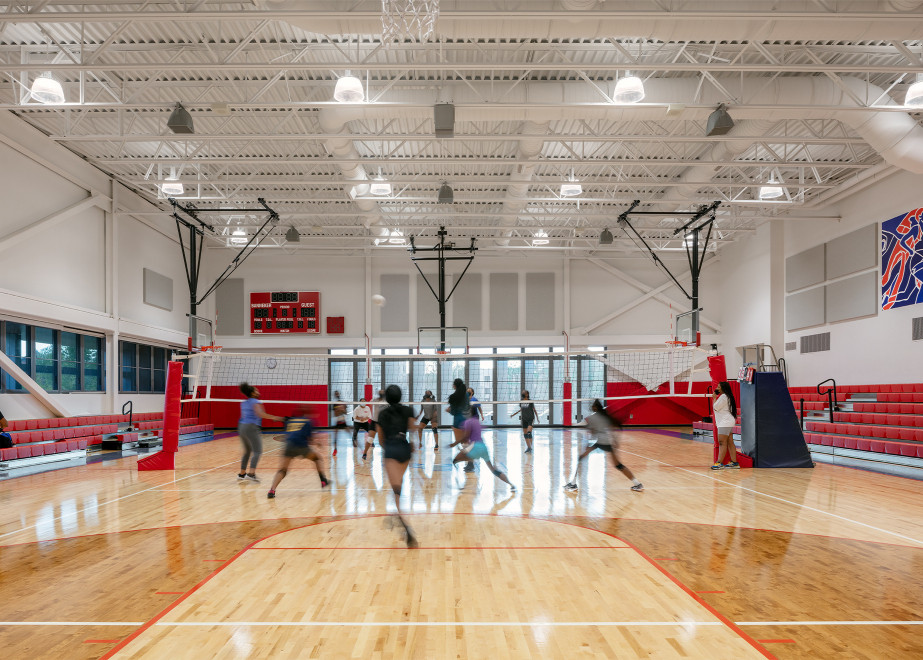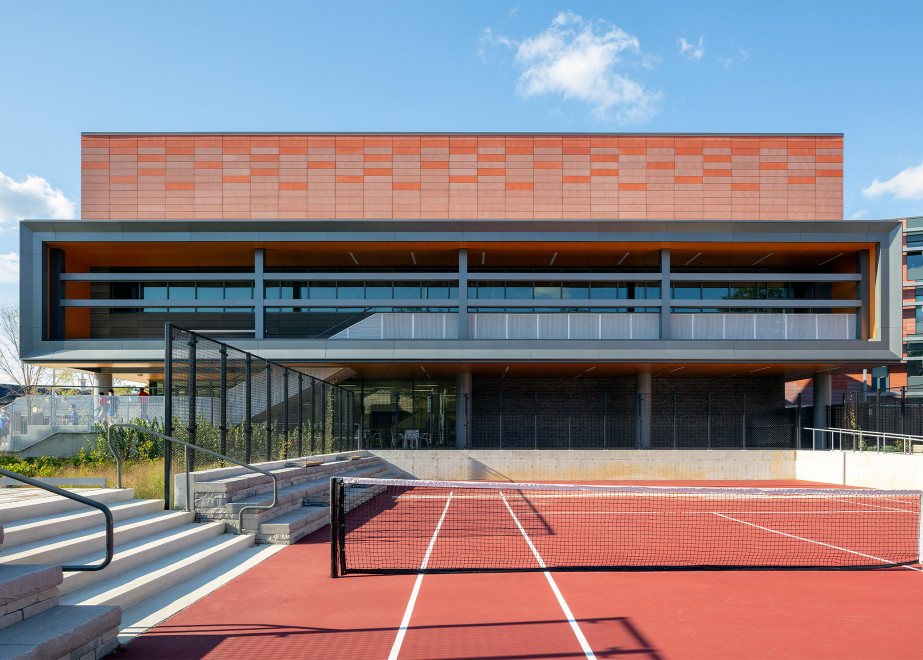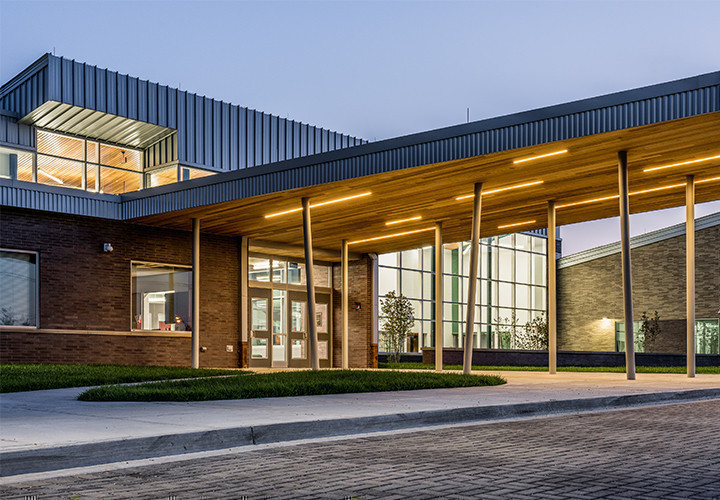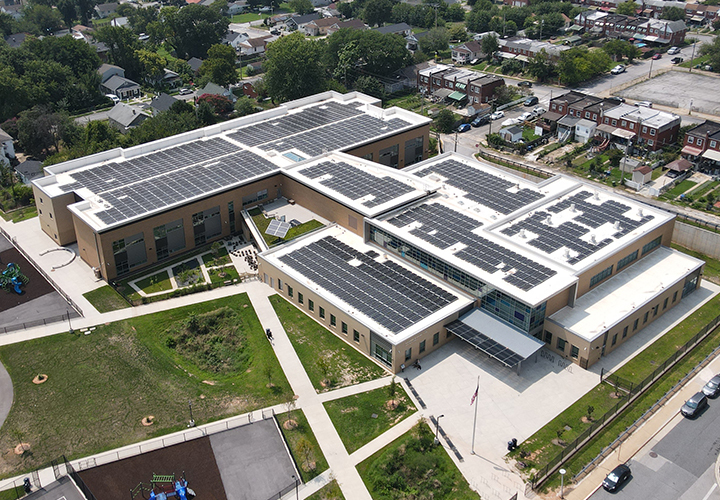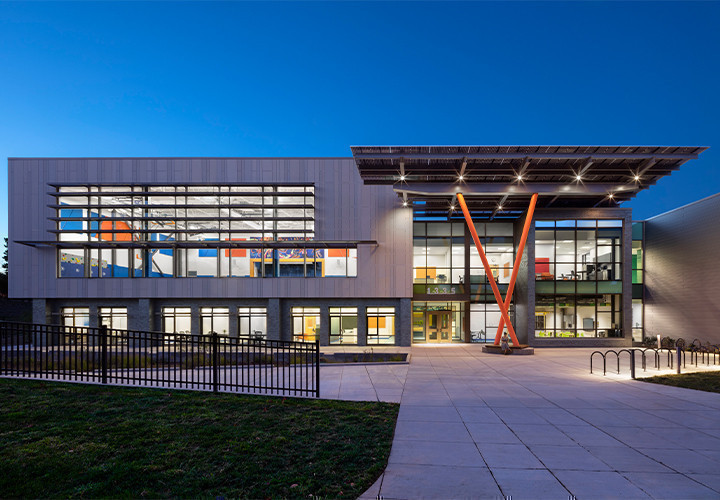The Solutions
Design and construction for this project followed the efficient Design/Build procurement strategy. This approach drastically minimized the timeline for completion, allowing DCPS to quickly provide a new high school to the Banneker community. The new school includes a spacious learning commons in the center of the building, fostering collaboration and inspiring creativity. The facility also features modernized informal learning spaces, such as performing arts, physical education, auditorium, central dining, and administration spaces.
Banneker Academic High School was designed as a high performance, energy-efficient facility that produces onsite, carbon-free renewable energy sufficient to offset the school’s annual energy use via a photovoltaic solar panel array. The building maximizes natural daylight modeling, acoustics, high performance envelope, and an energy efficient geothermal HVAC system to provide high indoor air quality. CMTA’s Commissioning team performed envelope air leakage testing via fan pressurization and non-invasive envelope diagnostic testing including thermography services to ensure envelope high performance criteria was met. The envelope air leakage rate obtained (0.088 cfm/sf) exceeded the high-performance marker of 0.15cfm/sf by 40%. The building was modeled to achieve an EUI of 24 and, after 12 months of data, the building is operating at an EUI of 19.8, a 15% improvement from the original design.
Due to the MEP design focus on high performance systems, Banneker Academic High School eliminates 878.6 metric tons of CO2e from the community annually. Additionally, though the new building is 30,000 square feet larger than the old building, the school costs $100,000 less per year to operate. That equates to $1 less per square foot in operational costs! Similar to John Lewis Elementary School, Banneker Academic High School is becoming a national K-12 leader in sustainability. The facility has achieved LEED Platinum certification and the title of Washington D.C.’s first Zero Energy and Zero Carbon High School. As of 2022, Benjamin Banneker Academic High School is the largest operating Zero Carbon School in the United States.
